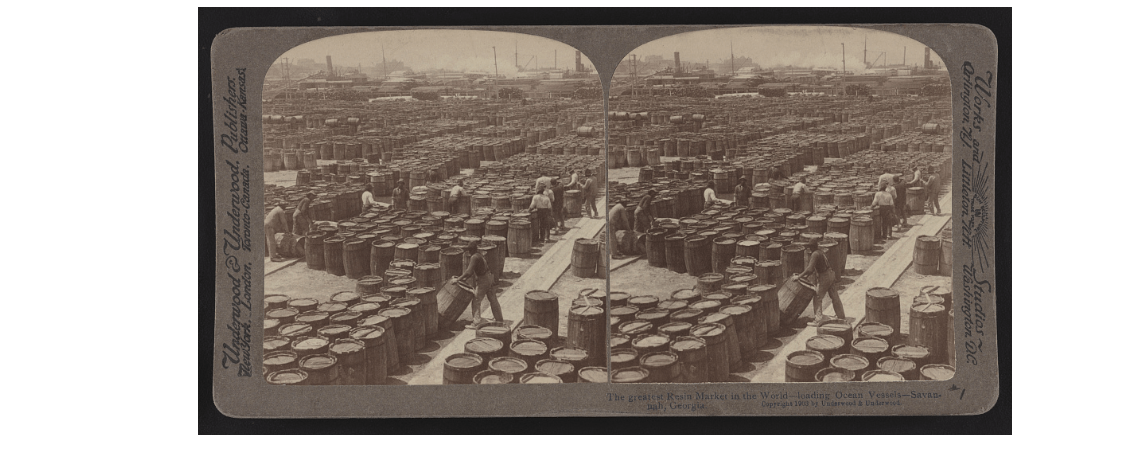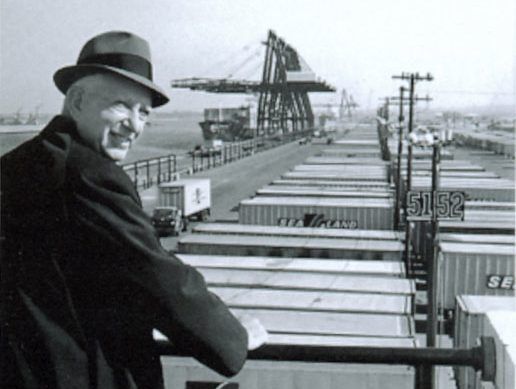The container, the idea that changed geography and trade
By KENSA Logistics
Last year, containers took center stage in the news. Even the mainstream press commented on the crisis in international trade in this regard. It was only then that the public, in general, realized the importance of these steel boxes which are moved around the planet in ships, trains and trucks. They carry bananas or t-shirts, television sets, liquor or automotive parts. And they seem to have always been there. Nevertheless, goods were not always transported in this way: though a recent invention, containers are here to stay. Without them, the explosion of international trade would be hard to understand. Our globalized world would simply be unthinkable.
The idea cannot be simpler: a standard-sized steel box which is loaded and unloaded once. Because, once it is full of goods, the box can be added to the roll section of a truck or train or can be placed and stacked on a ship for a sea voyage. It can be thus transported the distance required and there is no need to open it until it reaches its final destination.
However logical the idea may seem today; containers only began to be used in sea transport in the nineteen sixties. Up till then, the freight that arrived at the port by land was managed manually: dock workers were in charge of stacking sacks of grain, barrels of wine or boxes with chinaware on wooden pallets, and would look for the best way to optimize the space in the hold and protect the cargo. This was more or less what the Phoenicians and Romans had done many centuries before, the only difference being the cargo ships of the nineteen fifties had an infinitely greater capacity than the ships of antiquity. The operation was so risky, expensive and slow that the loading and unloading required almost as much time as the actual voyage.
Brilliant intuition
Malcolm McLean, son of farmers, was a humble carrier whose business grew during the harsh years of the Great Depression. Despite the difficulties, his family managed to save some money with which they bought a truck to help the McLean brothers earn their living on the road. Years later, he would talk about how, when he was very young, while waiting his turn to unload at a port, and watching the slow work of the dock workers laden with bales of cotton, he thought how much faster it would be if he could take the entire truck onto the ship.
The young McLean proved to have a brilliant mind. However, more important still was the fact that he had a will of iron, thanks to which, two decades after this intuition, he turned the idea into reality with some slight modifications. It was April 1956.
The first 58 containers in history
At the end of the Second World War, international trade was growing and McLean, whose road transport business had prospered a little, was encouraged to launch his idea. He took out a loan to buy and reconvert two military vessels to carry containers in the hold and on deck. In that spring of 1956, one of them transported 58 containers from the port of Newark, in New Jersey, to the port of Houston, in Texas. At their destination in Texas, 58 trucks were waiting to pick up the merchandise still in its metal boxes. It was a resounding success.
The McLean company opened up a variety of regular lines over the course of the following years. First of all, they offered services in North America and then started linking with the major European ports. The idea of containers expanded, but not as quickly as its inventor wished. It is true that the price of stowage dropped drastically from 5.86 to 0.16 dollars a ton of cargo. However, the ports did not have enough cranes, they needed to extend their facilities in order to manage the containers and the dock workers unions rejected the idea outright.
Despite all this, the container prevailed in the end due to two events. On the one hand, the McLean company was commissioned by the American army in 1967 to provide transport service between the United States and South Vietnam. The containers that travelled with war material to Asia returned with consumer goods which Japan was producing at a surprisingly low price for the North American market. Many traders saw a highly lucrative window of opportunity in these trips. On the other hand, McLean himself promoted the standardization of the size of the containers; and he did so through the most authoritative body: the International Organization for Standardization.
One decade to change centuries of history
Trade in containers took almost a decade to become consolidated. However, at the end of the nineteen sixties, there was no going back. The metal box definitively transformed world geography, as economist Marc Levinson recalls in his book, The Box. The ports aspired to attract more business investment in new infrastructure, making such traditional locations as New York and London irrelevant, and new locations like Oakland emerged. For its part, the industry discovered that it could locate its factories far from its customers. The vessels got bigger and bigger and transport prices dropped year after year.
Conclusions? Globalization, as we have known it, would not have been possible without containers.
The once humble truck driver raised a multimillionaire fortune. He died in 2001.




